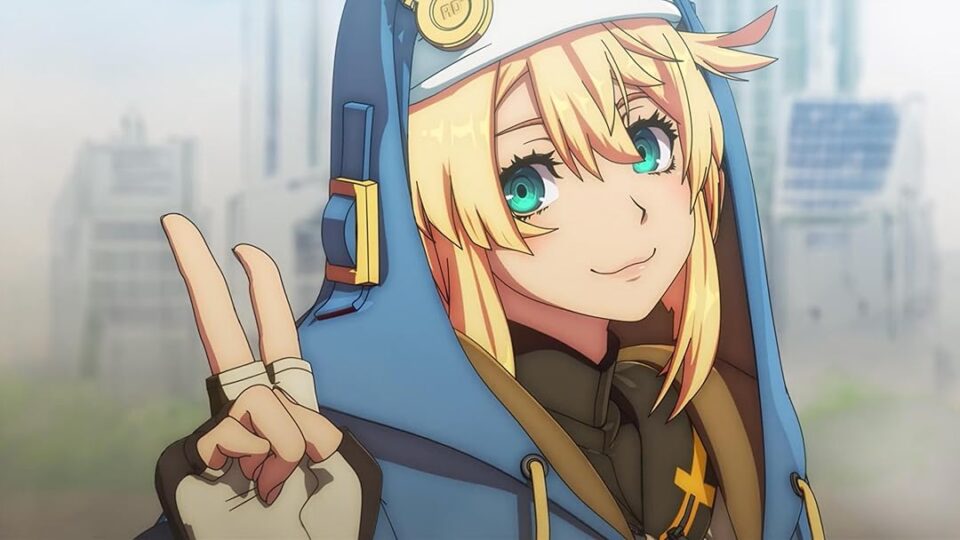The gaming and anime industry have a mutually symbiotic relationship, particularly in Japan. We’ve seen anime get adapted to fit a video game format (Dragon Ball Z: Kakarot, JoJo’s Bizarre Adventure: All Star Battle). Conversely, there have been games that have been turned into anime (Danganronpa: The Animation, Nier: Automata Ver1.1a).
And now 27 years later, it’s Guilty Gear’s turn.
Contrary to popular conception, not all video games are just loot and shoot. Some of them have very engaging and well-written plotlines that are, more often than not, familiar to a wider audience. These are stories that deserve to be heard and the only way to do that is if they’re turned into something that can be easily consumed by the masses — an anime adaptation.
Guilty Gear is a cult franchise of 2D fighting games with a very intricate plot. The first game came out in 1998, and the franchise has released consistent titles since, the latest being Guilty Gear Strive (2021). Aside from the mainline and spin-off games, there have also been light novels, drama CDs and a manga adaptation. And now finally Guilty Gear is breaking into the anime scene via Guilty Gear Strive: Dual Rulers.
The world of Guilty Gear is one in which technology has been replaced by magic. Somewhere along the way, with the intention of advancing evolution, Gears were created. These Gears are monstrous beings with incredible power, relegated to magic-infused bioweapons. The Gears frequently clashed with humanity, culminating in the long-drawn-out war known as the Crusades, where the humans emerged victorious.
Sin Kiske is a human-Gear hybrid, born from the union of humanity’s champion Ky Kiske and Gear Dizzy. When his parents decide to usher in the era of peace by making their relationship official, a rogue wedding crasher makes her goal known — to eradicate every single Gear and “save the future.” With his parents frozen, it’s up to Sin (along with his grandpa Sol Badguy) to put a stop to the ensuing mess.
Guilty Gear Strive: Dual Rulers is set somewhere between the aftermath of Guilty Gear Strive and the coronation of Dizzy (if her anime character design is anything to go by). It also seems to be setting the stage for the new generation of protagonists (Sin and Unika). It feels fitting, especially since Guilty Gear Strive essentially marks the end of Sol’s story.


The anime’s art style is reminiscent of the in-game models, a highly stylised mix of 2D and 3D cell shaded graphics that feature very distinct and sleek character designs. It is amusing, however, to see characters look battle-ready but lounge around and do mundane activities (looking at you, Jack-O).
It’s also pretty clear that there were budget constraints in terms of animation since there are a lot of close-up shots, static backgrounds and frozen images where there’s more narration than movement. Close-ups, front facing head shots of Unika in particular, make it seem like the viewer is looking at her through a fish-eye lens. But the trade-off is that the fight scenes are dynamic and get special attention. The attacks are almost a perfect recreation of the moves of the characters in the game, especially when it comes to characters like Sin, Sol and Johnny.
There are many abrupt cutaways and punchy scene breaks that happen mid-scene, with so much exposition that while occasionally jarring and distracting, they remain essential to the story.
Which brings us to the biggest drawback to the show so far: the pacing.
Guilty Gear has a vast and often confusing lore. There’s so much source material that it’s hard enough for veterans of the game to keep track, but it’s nothing short of impossible for someone entirely new to the series. So how does one go about condensing 27 years of world building into a 24-minute episode?
A narrator.
The anime employs a very tell don’t show narration technique — literally.
Guilty Gear Strive: Dual Rulers has an unseen narrator who clues the viewer in on the who-what-when-why-where-how based on what’s happening on the screen. Therefore, most of the lore dump and character introductions happen via humorous narration breaks during the cutaways. It does take away from what is playing out on screen, but a refresher course is necessary for viewers who lack the required context.
Given that the initial episodes are meant to set the stage and position the pieces, hopefully, the pacing will get better as the story unfolds.
But before he gets on your nerves (if he does), there is a very interesting tidbit regarding the unnamed narrator that may or may not become relevant in the future. It’s that the voice actors in the show are the same as the ones voicing the characters in the games.
Without venturing too much into spoiler territory, the anime’s narrator shares his voice with a certain character in the game. This character goes on to become a radio host who broadcasts from a colony on the moon. So, it’s pretty meta from an in-game perspective that the events being narrated to us could actually just be an in-universe real-time radio show!
Despite its initial pacing issues, the anime does provide a decent entry point into the franchise. While it is bittersweet that diehard Queen fan Sol Badguy (aka Frederick Bulsara) isn’t taking centre stage this time around and instead passing the torch onto his grandson, it’s nevertheless going to be an exciting journey.
Guilty Gear Strive: Dual Rulers is streaming now on Crunchyroll.
















Leave a Reply